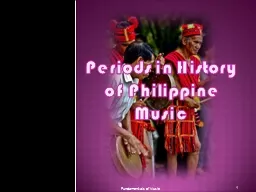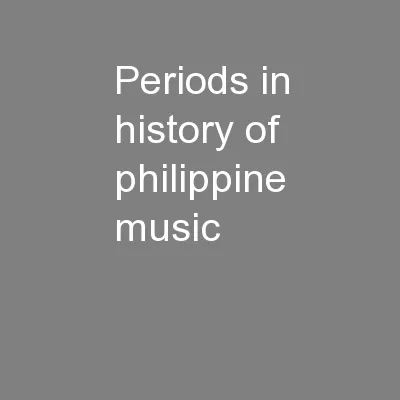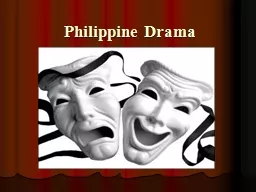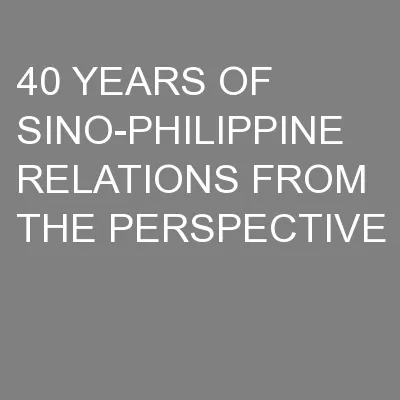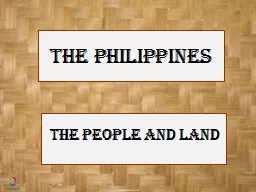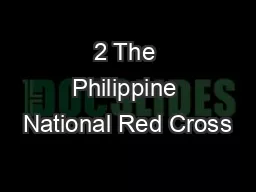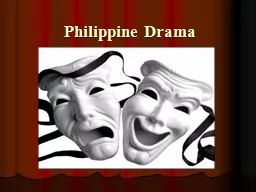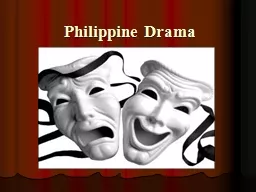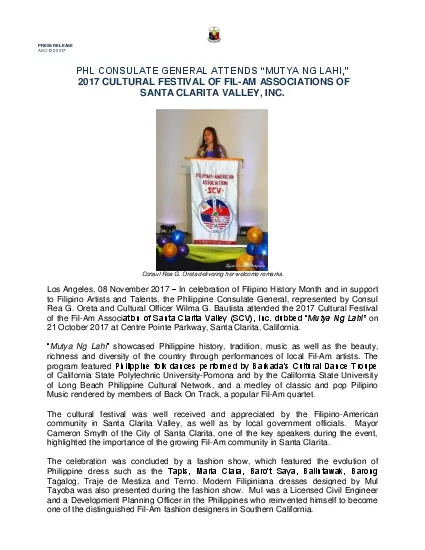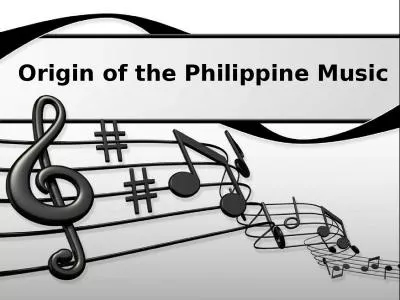PPT-Periods in History of Philippine Music
Author : tatiana-dople | Published Date : 2020-04-05
1 Fundamentals of Music PreSpanish period Fundamentals of Music 2 Filipinos are said to be Musical Peoples In most cases singing is accompanied by dancing They
Presentation Embed Code
Download Presentation
Download Presentation The PPT/PDF document " Periods in History of Philippine Music" is the property of its rightful owner. Permission is granted to download and print the materials on this website for personal, non-commercial use only, and to display it on your personal computer provided you do not modify the materials and that you retain all copyright notices contained in the materials. By downloading content from our website, you accept the terms of this agreement.
Periods in History of Philippine Music: Transcript
Download Rules Of Document
" Periods in History of Philippine Music"The content belongs to its owner. You may download and print it for personal use, without modification, and keep all copyright notices. By downloading, you agree to these terms.
Related Documents

